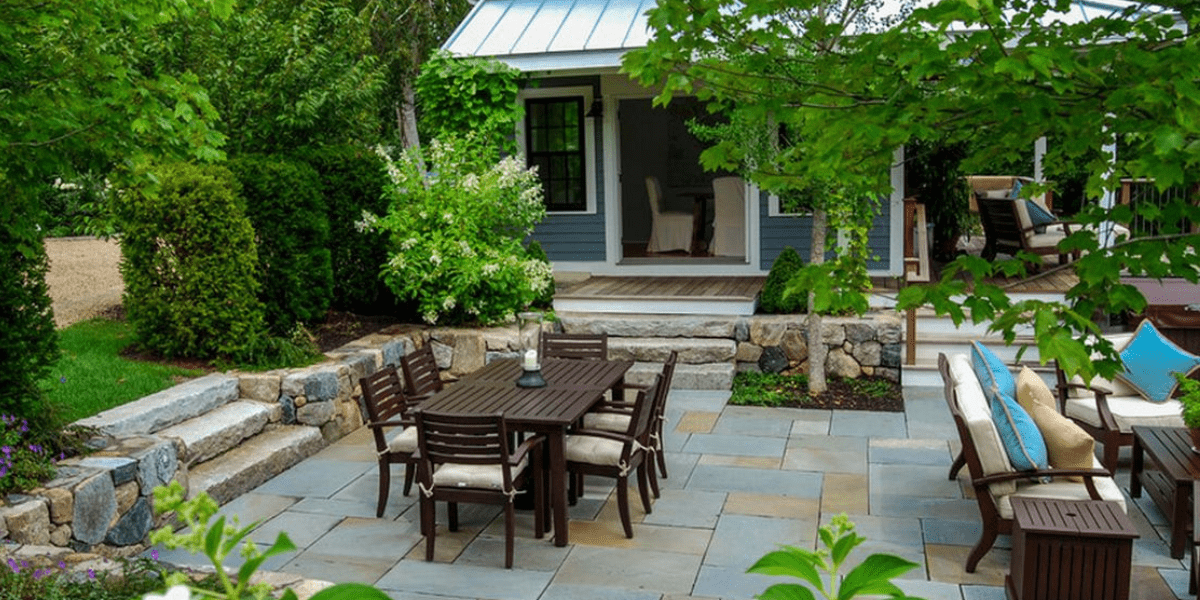Every outdoor space tells a story.
The cracked patio where your coffee mug rests every Saturday morning. The slope in the yard you’ve always meant to fix. The patch of earth where your kids run barefoot, where weeds meet flowerbeds and shade meets sunlight. Whether you plan it or not, your landscape becomes an extension of your habits, your preferences, and how you live day to day.
But what happens when you begin to design with intention—when you decide that your outdoor space should reflect the life you want, not just the one you inherited?
That’s where landscaping shifts from a background chore to a lifestyle practice. Not just trimming hedges or planting shrubs, but shaping space with a deeper sense of rhythm and purpose. It’s less about perfection, and more about alignment.
A Yard Is More Than Grass
A yard isn’t just the green stuff you mow. It’s a space with potential moods: calm, energetic, social, contemplative. The right layout can create privacy or invitation. It can quiet a chaotic home, or bring people together under string lights and summer skies.
Landscaping is the medium. It frames your experience of the outdoors—just like furniture frames the way you use your living room. A quiet corner of ferns under a tree isn’t just aesthetic. It’s a place to think. A raised planter box becomes a conversation starter. A fire pit arrangement becomes tradition.
Designing these elements with purpose means understanding how you already live—and how you want to live.
Slopes Tell Their Own Story
Not every yard is a blank slate. Some come with grades, dips, and runoffs. And while these features may feel like obstacles, they’re actually the starting point for some of the most beautiful outdoor transformations.
Retaining walls are often the key. They’re functional, sure—controlling erosion and making steep land usable—but they also shape how space is experienced. A curved wall at the edge of a garden bed doesn’t just hold soil. It creates a natural seating area, a backdrop, a boundary. It turns elevation into opportunity.
Rather than flattening everything, a good design works with the landscape’s natural flow. Retaining walls act as guides, giving form to movement and layers to your yard’s story.
Movement, Pause, and Flow
In good design—interior or exterior—there’s a principle of rhythm. Not in a musical sense, but in how space carries you. You move, you pause, you take things in.
Landscaping applies the same logic. A meandering pathway leads you forward. A pergola makes you stop. A low wall frames your view. These design elements don’t just look nice—they dictate how you experience time outdoors.
The genius of well-executed landscaping isn’t just in how it looks. It’s in how it feels. How it slows you down. How it invites stillness or activity depending on the moment.
Designing for the People Who Live There
There’s no one-size-fits-all yard. A retired couple may dream of peace and pollinators. A young family might crave flexible zones for play and gardening. The key is building for real life—not some magazine version of it.
Landscaping works best when it adapts to people, not the other way around. That might mean low-maintenance native plants for a busy lifestyle, or multi-use retaining walls that support gardens and seating. It could mean turning a forgotten side yard into a gravel meditation space, or adding structure to a backyard prone to flooding.
It starts by observing how the space is already used—then asking how it could support your life even more.
Time of Day, Season of Life
Great outdoor spaces evolve. What works today may shift in five years. That’s why landscaping with flexibility in mind is so valuable. It’s not about locking in a permanent layout—it’s about creating zones that serve you now, but adapt later.
Retaining walls are particularly valuable in this regard. They can serve multiple functions over time: first as erosion control, then as garden beds, later as raised edges for a fire pit area or terrace garden. Their longevity is part of their appeal.
K-ler Landworks is one of many local teams that understand this idea: that your yard isn’t a static project, but a living, shifting part of your home’s identity.
Mood Over Maintenance
For some, landscaping feels intimidating because of the upkeep. But the most satisfying outdoor spaces aren’t necessarily the most manicured. They’re the ones that match your mood.
Low-water plants. Ground cover that doesn’t need mowing. Retaining walls that double as garden borders. When design aligns with lifestyle, maintenance becomes manageable. It becomes something you enjoy—not something you dread.
Focus on how you want to feel. Relaxed? Inspired? Energized? That’s your design direction. The rest is just details.
Built to Be Used
We spend so much time perfecting interiors that we forget to shape the places just outside our walls. But those thresholds—porches, patios, gardens, side paths—are the first thing we step into when we leave the house. They set the tone. They offer a reset.
When you design those spaces with intention, you use them. More coffee outside. More barefoot walks through grass. More quiet evenings that don’t need entertainment—just a place to be.
Landscaping is the invitation. It doesn’t demand use, but it welcomes it.
Final Thought: Design That Grounds You
Not every yard needs to be a masterpiece. But every yard deserves to be lived in.
Through careful landscaping—and smart use of retaining walls where needed—you can transform what was once just a patch of ground into a place that holds memory, rest, and rhythm.
Start with how you want to live. Build from there.
Because when your landscape reflects your lifestyle, it becomes more than a view. It becomes a part of who you are.








/socialsamosa/media/media_files/2zHb3sGz3BcGQQrVtOoh.png)
